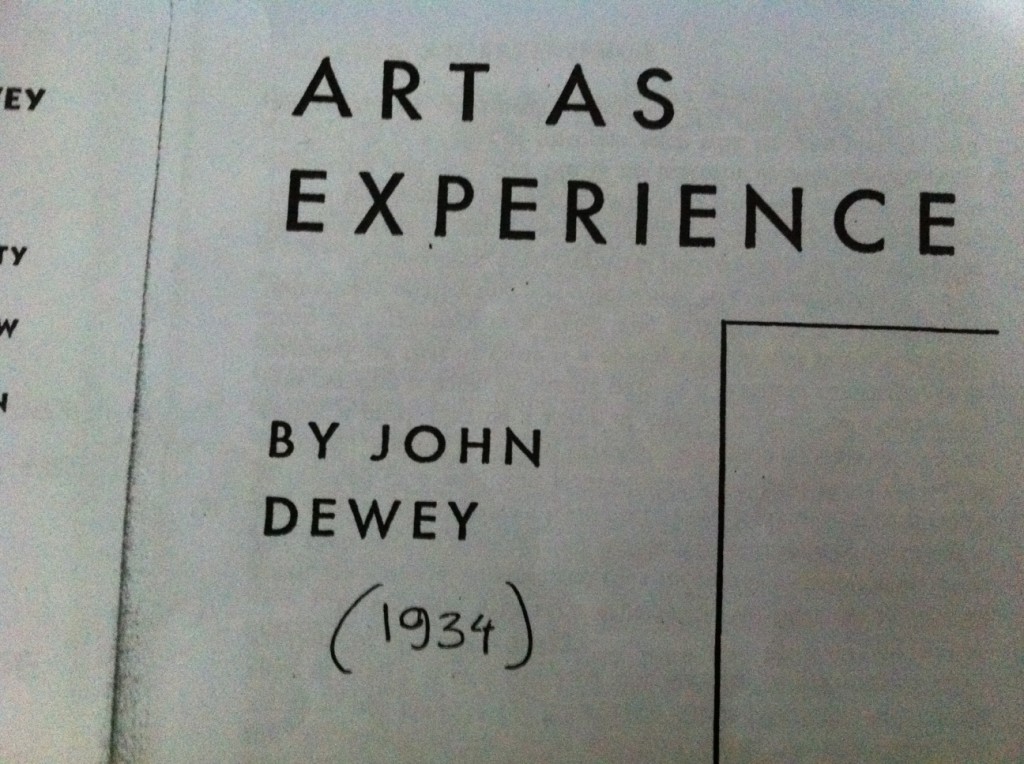Last updated on August 15, 2013
Video Games, Art, and Objective Standards is an exhaustive look at video games, the ambiguities of art, and how they come to rest on objective standards – though maybe not in the way you were thinking. This series intends to show video games are a unique medium that deserves a special criteria and methodological examination. This is part and parcel of my theology as well. I invite you to leave comments on any section below!
- Introduction
- Preliminary Objections (2)
- (Preliminary Assumptions) Defining the Video Game
- Game Studies – Ludology
- Game Studies – Narratology
- Dewey – Understanding the “Live Creature”
- Dewey – Avoiding Abstractions
- Dewey – Video Games as Pragmatic Experiences (2)
- Judging Video Games as “Art” (2) (3)
- Addressing the Critics and Game Studies
- Conclusions
Although I’ve pointed out the problems with both approaches, narratology and ludology, let’s reiterate in a more focused way that truly points to the problem. These are simply methodologies; neither of them, the historical approach of the ludologist or the institutional approach of the narratologist, have made the attempt to find what “art” is. Philip Deen places the problem in perspective:
Both the historical and institutional defenses address video games from the outside. They do not speak from within the medium itself and to its unique qualities…In short, any argument that video games are art that effaces their particular nature is inadequate.
Certainly, this situation appears dire; some have recommended, instead, that the subject should be left alone. Alex Kierkegaard, the pseudonymous video game philosopher/theorist, advocates this third view in stating
The question `Can games be art?’ is nonsensical, and therefore any answer one might come up with for it will also be nonsensical. Put another way: the question is not a question and the answer is not an answer.
What occurs, instead, is “good” art and “bad” art become designators of “like” and “dislike”, akin to Wittgenstein’s statements in the Tractatus that
When the answer cannot be put into words, neither can the question be put into words. The riddle does not exist. If a question can be framed at all, it is also possible to answer it.
Alex Kierkegaard, in effect, believes that aesthetics are outside the world, and hence the question cannot even be posed, let alone answered. Barring a complete nihilistic approach to art, the situation looks bleak.
Thus, neither field has attempted to counter the claims of Ebert, in that “video games cannot be art.” It is not necessarily his criticism that is the primary problem; it is the avoidance of the issue altogether that strikes one as awkward. What are they studying? Why should I care about video games at all? Certainly, all new forms of media had a stage wherein their presentation was considered popular junk for the masses; why must this prejudice continue with video games as well? Of course, there’s always a subjective element here, but it is also an element of taste; the younger generation’s taste of prolific art (in effect, that “art” is everywhere) fight against that of the older institutionalized notion of art (it must be in a museum, after all). The cycle continues into our own time, and once again the new will usurp the old, only to find itself usurped at a future time in a different cultural context.
This is the same way many people view the Bible as well, much to my personal chagrin. It is difficult to “reconcile” the Old Testament with the New Testament, and many opt instead for a supercessionist viewpoint that dismisses one God for another. In fact, they are both the same, but why bother with intensive study and making sense of the whole versus a host of banal generalities that prove your point? Much like the Internet in general, everyone has a personal agenda or tie to one subject or another, and they will try their best to find the result they desire, rather than the truth that lies right before them. You know, that same Old Testament that says this in 1 Samuel 15:
26 But Samuel said to Saul, “I will not return with you; for you have rejected the word of the Lord, and the Lord has rejected you from being king over Israel.” 27 As Samuel turned to go, Saul seized the edge of his robe, and it tore. 28 So Samuel said to him, “The Lord has torn the kingdom of Israel from you today and has given it to your neighbor, who is better than you. 29 Also the Glory of Israel will not lie or change His mind; for He is not a man that He should change His mind.”
And, I imagine, we would need to say that Jesus isn’t the same…which would mean His fulfillment of the Law comes from a different source. I could go on and on with the logical complications to this, but you get the idea. SIGH.
So, in that vein, what do we do with video games? How do we understand them as a device for artistic expression that views them as they are – as “games”, duh – without making them into some pretentious art form that excludes much of the medium’s past history? I think, in this vein, of the current “indie vs. AAA” divide. They don’t need to show constant opposition; each can respect the other’s strengths though I fail to see what makes indies great – KIDDING.
I do fail to see the usefulness of the term when nearly everyone on earth is dependent on someone somewhere, and games like DooM, Serious Sam, and even Bayonetta and Vanquish are, in the technical sense, independent developers. Heck, even Activision-Blizzard technically functions independently now. It just seems a dumb designation for games that, for better or worse, already fit into our pre-existing genres designations. They don’t get special treatment because one guy made them; if they’re better than what a high-end development team can product, more power to them, but it seems like an excuse for them to pose rather than exceed larger teams.

If we’re placing them into one category, we may as well put their elements into one category too. Narrative and games don’t need to be oil and water, nor does one need to usurp the other’s roles. Games without “stories” in the Western narrative sense aren’t pariahs by virtue of not fitting into a pre-existing cultural norm! Common and “high” art both exist in the real world, and why dismiss one in light of the other? There’s room for (I didn’t say there were, though) good games in either side, but we need a common way to look at the whole, a general method that makes sense.
There is a middle ground, not only between the narratologist and the ludologist, but also in defining what constitutes “art” in the video game realm. Using a variety of examples, John Dewey’s theory of aesthetics as described in Art as Experience bridges the gap between video game rules and video game narratives, allowing for easy categorization and description of what makes a video game “art” in a pragmatic fashion. In fact, we could call it a particularly “Christian” interpretation, if not for the fact that Dewey was certainly not religious in any traditional sense. That doesn’t make the depth of his contribution any less intriguing to this particular issue!
So let us take a thought experiment: What if the video game itself were not judged, but the experience which it produces upon a person? Don’t take this in the postmodern sense, but in the union of the art itself plus the response of the viewer to that work of art. If art were determined in a fashion that allowed video games to work as a fusion of narratives and rules, rather than one at the exclusion of the other, a middle ground can be achieved. Dewey’s later aesthetic theory, in that respect, can achieve this end by defining art as “an experience”, allowing video games to enter the art debate without grand discrepancies in definition.
According to Dewey, art can be found primarily in the day-to-day normal life of experience – in other words, art exists in lieu of its function in experience. For Dewey, the word “art” is an unnecessary compartmentalization; rather, in analyzing daily experience human beings can
discover how the work of art develops and accentuates what is characteristically valuable in things of everyday enjoyment.
Video games, for many in modern society, are an every day enjoyment that replicate that kind of aesthetic experience. However, it is absolutely amazing how many persons can be involved in the making of these games, primarily produced for an audience that may or may not enjoy the product. According to Wedbush Securities analyst Michael Pachter, Electronic Arts, a large video games publishing company, has invested over eighty million dollars in the production of Star Wars: The Old Republic, a game that will hopefully appeal to millions of players. What strikes one as odd is the fact that people will pay to submit themselves to arbitrary challenges in video games – why is this the case?
In the same way that a living creature interacts with its environment to satisfy its needs, so do video gamers perform their task out of their own sense of will. Furthermore, every video game has a sense of pacing, structure (as defined by the developers), and rhythm to which it moves – whether fast and frenetic in an action game, or slow and plodding within a strategy game. The actual playing of the game, interaction with a digital environment, leaves the player in constant danger for his/her playable character. When the temporary goal set before the player has been completed, there is a sense of accomplishment and developing skill within the video game’s rules. The player, in interactions with the game world, continually fixes disunity in the game environment and learns from mistakes, allows discord to induce reflection and continues onward to restoration of unity, or completing the game. Video games display elements of “immersion”, the full and total focus of a human’s consciousness and action to a singular goal or end. Dewey, in describing the “savage man” regales the way he is
observant of the world about him and most taut with energy…His observation is both action in preparation and foresight of the future. He is as active through his whole being when he looks and listens as when he stalks his quarry or stealthily retreats from a foe. His sense are sentinels of immediate thought and outposts of actions, and not, as they so often are with us, mere pathways along which material is gathered to be stored away for a delayed and remote possibility.
The experience of playing a video game exists as an anthropomorphized representation of the same aesthetic experience of Dewey’s “live creature”, except the tension, disunity, and unity proceed through the context of a digital world’s narrative and rules. In fact, it restores those same feelings but in new and fantastical constructions of reality, creating entirely new worlds still intelligible to human beings. Once the equilibrium has been stabilized and the consummation of “fun” reaches its end, the player begins anew with a different video game. However, skill in one game transfer to any number of others; thus, continual experience and the fulfillment of struggles and achievement continue in a rhythmic, developing structure designed by humans, intentionally or not, for this very purpose. The rudimentary glimpse of aesthetic experience has come full circle, though each game is only a small part of the large consummative experience.

